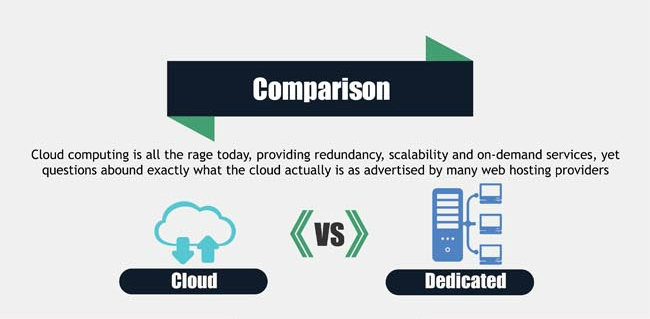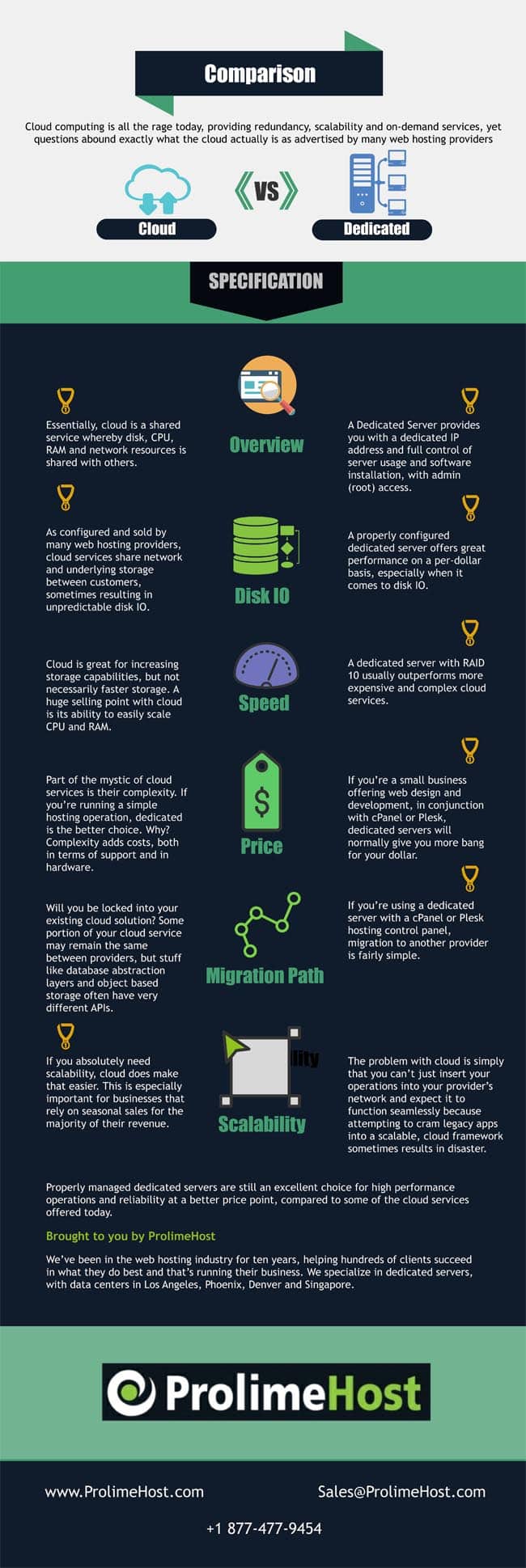Choosing the most suitable web hosting environment is one of the most important questions that you need to answer when kicking off your businesses online presence, and making the right choice here can help you avoid some nasty nightmares. The decision you make here will not only affect your startup time, but it will also come into play further down the road as your business grows and your online needs and requirements expand. Making the right choice doesn’t get any easier when a mere hosting plan comes with several different variations these days (shared, semi-dedicated, dedicated, VPS, reseller – to name a few). ProlimeHost looked to help clear some things up with their latest infographic – showcasing the differences between the cloud & dedicated servers.
Cost Differences
While it does depend on the packages, the usual monthly cost for dedicated servers ranges greatly, starting from $100 and reaching upwards of $1,000. If you look hard enough you can start at a measly 50 dollars but such configurations are not really worthwhile. On the other hand, in the case of cloud computing, cost depends entirely on usage – not server configuration.
With cloud hosting you are primarily charged for only three things: the amount of storage, the processing power necessary to answer your requests, and the duration of time your storage or requests take. The best part about cloud storage is that there is no cap like with dedicated servers. A user is only charged for what he or she uses on the cloud, whether it is data transfer cost or data storage cost.
Performance
Both hosting solutions are equally comparable performance-wise. Dedicated web servers are as fast as you build them – and can easily be as fast as their cloud hosting competitors; but there is something called a ‘dirty’ instance when it comes to dedicated servers. Similar to a computer slowing down due to too many unwanted programs, these servers can experience the same predicament. Cleaning up a dedicated server is a lot more work than simply launching a new cloud instance – which usually happens with the press of a button.
Scalability
Cloud computing makes scalability easier than ever – with upgrades taking mere seconds to take place. Improve performance, add memory, increase space, and much more – with mere button clicks on most cloud hosting platforms.
Take a look at the infographic below for more fun differences between cloud hosting & dedicated servers.


[email protected]